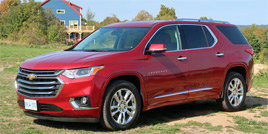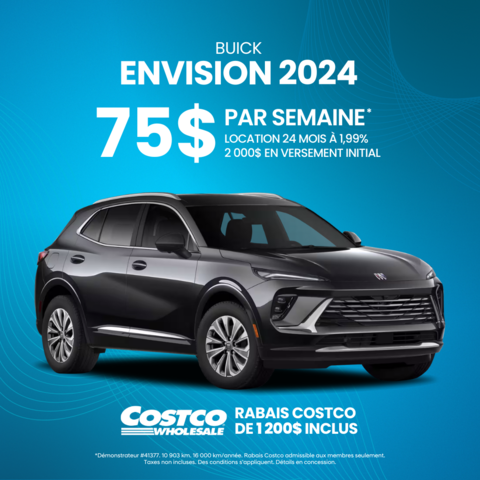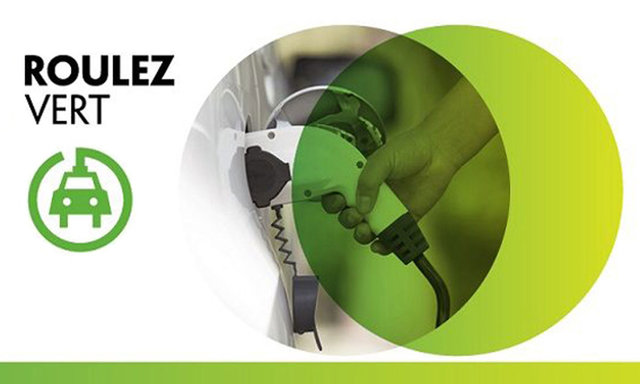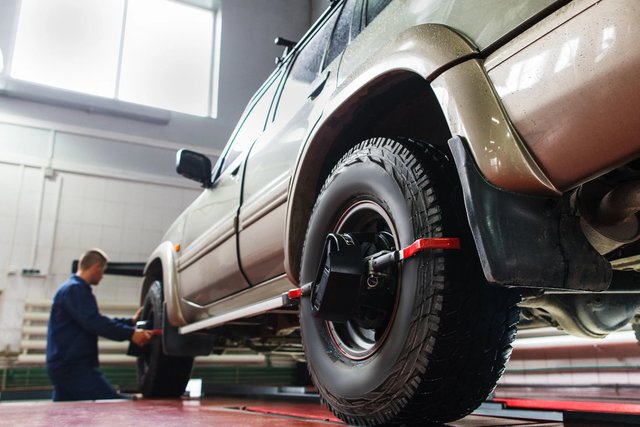My Chevy Traverse has a rattle in it. It’s a brand-new vehicle, and it shouldn’t have a rattle, but there it is. Over a rutted road, there’s an annoying, plasticky, nasty rattle that won’t go away.
I touch parts and panels, trying to figure out what’s making the noise. And after all that, it turns out to be a loose cap on my water bottle. I remember when SUVs were just trucky boxes of noise on wheels. They’ve all been getting more car-like for quite a while, but it’s still impressive when one’s quiet enough inside that I can hear a wobbly lid.
The Traverse is all-new for 2018, starting with a stiff new platform that gives it a comfortable and – as I discovered – very quiet ride. The vehicle’s overall length remains virtually the same from the last-generation model, but the wheelbase is longer, which provides more interior space. The third-row cushions are still uncomfortably hard and flat, but there’s now enough legroom there for most adults, and of course children will love being back there. There’s also an impressive amount of cargo space even when the back chairs are up, which is often a weak point for many three-row vehicles.
Naturally, the styling also morphs with this new model, with a more angular design that gives it a bigger-than-it-is look that GM’s rep described as “more masculine” (although I’m not quite sure what made the last one apparently more feminine-looking). In any case, it’s a handsome beast. The large windows provide good visibility, and while slightly bigger mirrors would improve that even more, all models come with a standard rearview camera, and mid-level trims and up add a 360-degree view to it.
The new 3.6-litre V6 engine is the usual more-power-less-fuel improvement over the old Traverse, making 310 horsepower and 260 lb.-ft. of torque. Eventually it will be joined by a turbocharged four-cylinder engine, at 255 hp and 295 lb.-ft. of torque, which will come solely in the new RS trim level, and only in front-wheel drive. It’s mostly aimed at urban drivers who don’t want a bigger engine, although the fuel savings will be minimal. The V6 with FWD is rated at a combined city-highway rating of 11.0 L/100 km, the four-cylinder at 10.5. Even the all-wheel V6 isn’t that huge of a jump over the front-wheel, with a combined 11.8 L/100 km.
The V6 comes in five trim levels, starting at $34,895 for the LS and climbing to an eye-watering $58,495 for the top-line High Country. The two lowest levels come in FWD or AWD, while everything else is all-wheel. Even so, the all-wheel can be switched into front-wheel only through a dial on the console. I’d leave it in all-wheel anyway, because the Traverse runs primarily in front-wheel, but distributes power to the back whenever needed to maintain traction – peace of mind over a very small difference in fuel economy.
The High Country exclusively includes a more sophisticated all-wheel system with torque vectoring, which gives it more stability on sharp curves. It may eventually find its way into lower trims, but for now it’s kept at the higher level primarily because it’s a costlier system to build.
There’s a lot of technology in this new model, but one that grabbed my attention is a program in the electric power steering. Turning the steering wheel the right way in a skid can help get you safely back on track. If the Traverse detects it’s going sideways, it will make the wheel easier to turn in the correct direction, and harder if your wrong move will make the skid worse.
The V6 is a smooth performer, as is the nine-speed transmission that’s mated to it. It includes start-stop, which shuts the engine off at idle to reduce fuel consumption and emissions, but while most manufacturers give you the option of temporarily disabling it, GM doesn’t. I much prefer having the choice.
My noisy bottle cap aside, the Traverse is a pleasant driver. It feels smaller than it is, helped by the responsive steering and tight turning radius. The seats are supportive, both on the leather-clad High Country and cloth-upholstered LT trim levels that I drove.
The wide centre console makes the front foot wells a bit tight, but there’s good legroom for second-row passengers. One middle chair can be slid forward while upright, so a child seat can remain in place while providing third-row access, and it’s a relatively wide opening to get back there.
Connectivity is the big deal these days, and all models come with Apple CarPlay and Android Auto, 7- or 8-inch infotainment screen, WiFi hotspot and a rear seat reminder lest a child be forgotten. The screen itself slides up to reveal a hidden storage cubby, and you can set a PIN to lock it.
Canadians have consistently been buying more SUVs than cars, and so automakers have been putting their efforts into making their people-movers better. There are a few minor flaws, but overall, this Traverse revamp is pretty impressive. It’s roomy, it looks good, and it drives well, and that’s what most people prioritize in a family vehicle. Just be sure to secure all drink containers before driving.






